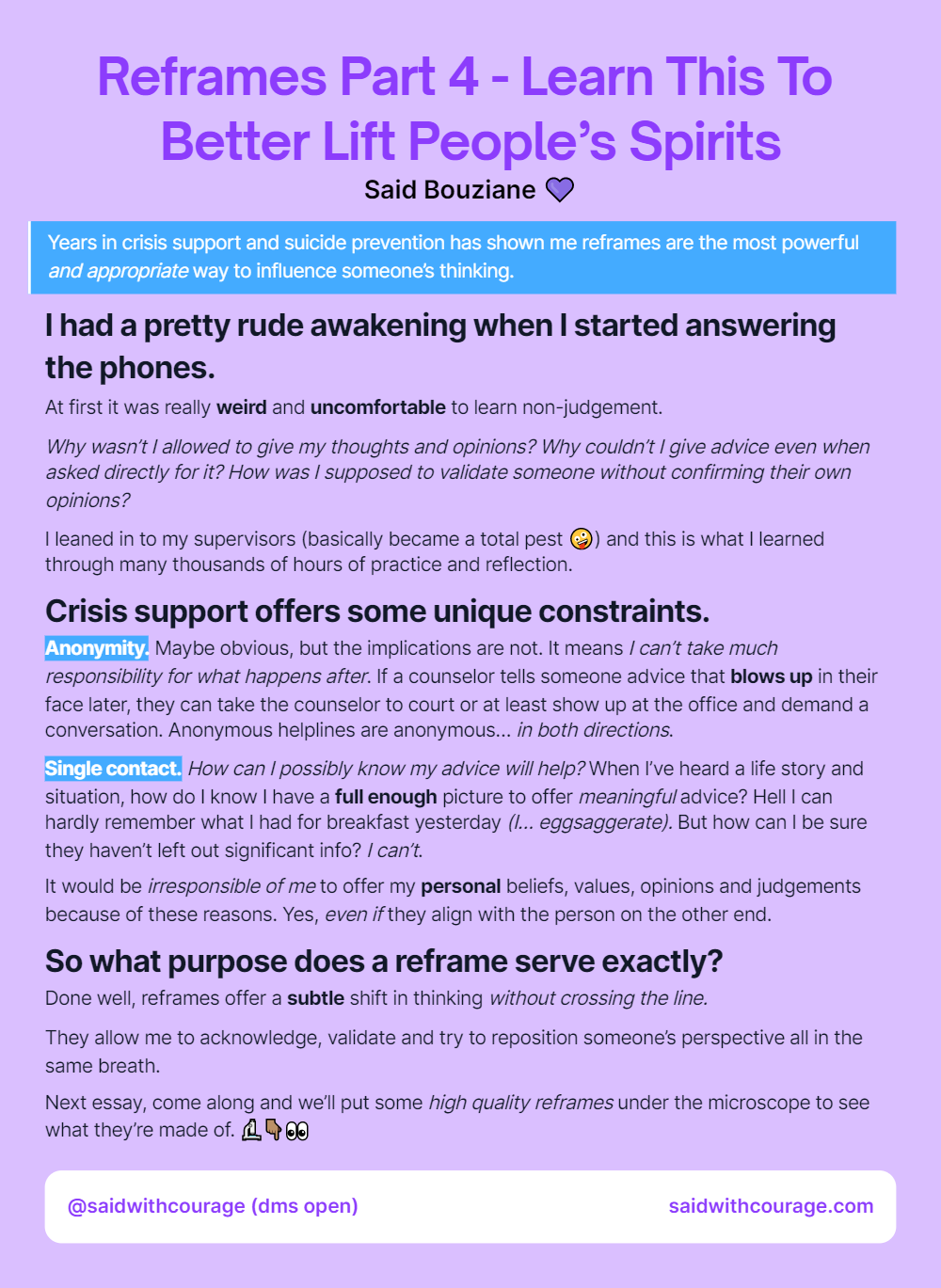Years in crisis support and suicide prevention has shown me reframes are the most powerful and appropriate way to influence someone’s thinking.
I had a pretty rude awakening when I started answering the phones.
At first it was really weird and uncomfortable to learn non-judgement.
Why wasn’t I allowed to give my thoughts and opinions? Why couldn’t I give advice even when asked directly for it? How was I supposed to validate someone without confirming their own opinions?
I leaned in to my supervisors (basically became a total pest 🤪) and this is what I learned through many thousands of hours of practice and reflection.
Crisis support offers some unique constraints.
Anonymity. Maybe obvious, but the implications are not. It means I can’t take much responsibility for what happens after. If a counsellor tells someone advice that blows up in their face later, they can take the counselor to court or at least show up at their office and demand a conversation. Anonymous helplines are anonymous… in both directions.
Single contact. How can I possibly know my advice will help them? When I’ve heard someone’s life story and situation, how do I know I have a full enough picture to offer meaningful advice? Hell I can hardly remember what I had for breakfast yesterday (I… eggsaggerate). But how can I be sure they haven’t left out significant info? I can’t.
It would be irresponsible of me to offer my personal beliefs, values, opinions and judgements because of these reasons. Yes, even if they align with the person on the other end.
So what purpose does a reframe serve exactly?
Done well, reframes offer a subtle shift in thinking without crossing the line.
They allow me to acknowledge, validate and reposition someone’s perspective all in the same breath.
Next essay, come along and we’ll put some high quality reframes under the microscope to see what they’re made of. 🔬👇🏽👀

